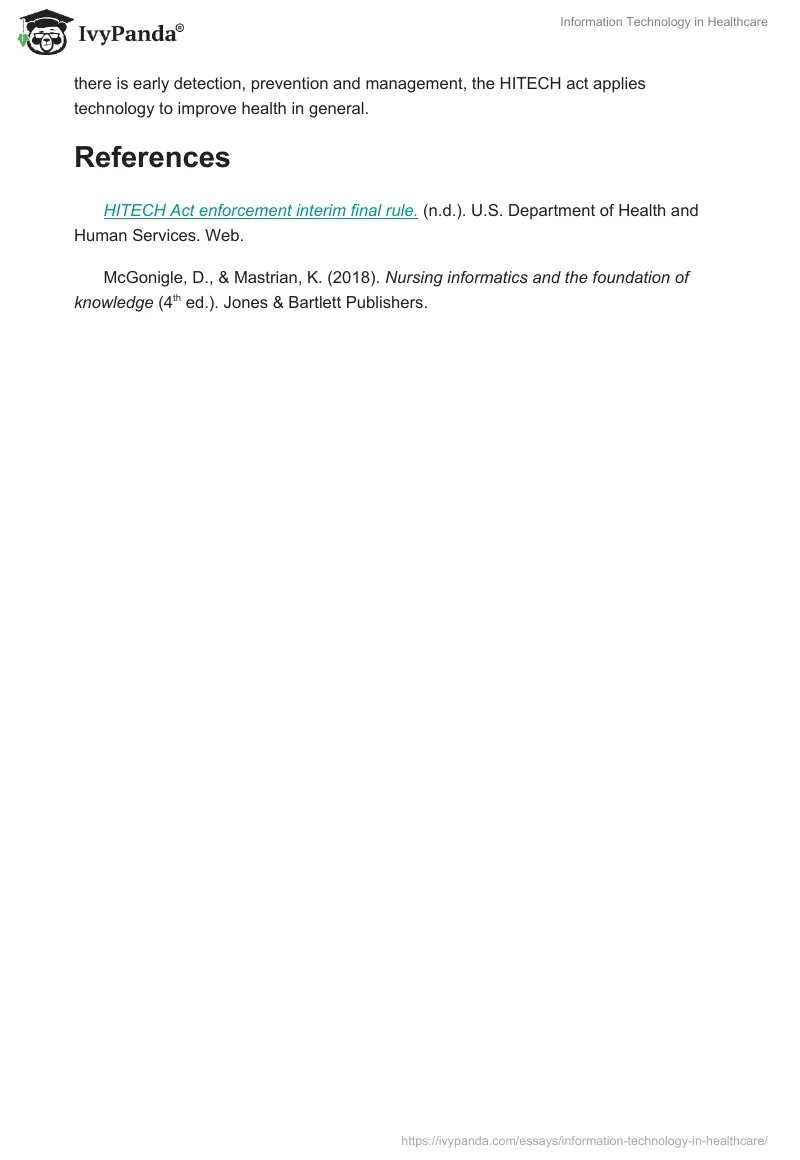Improving healthcare has been a continuous challenge and thus various laws with different goals have been drafted to solve this it. The Health Information Technology for Economic and Clinical Health (HITECH) act seeks to promote health services by adopting information technology in health practices. McGonigle and Mastrian (2018) take a deeper look at the act and propose seven goals of the HITECH act. Preeminent among the goals is improving people’s health by promoting prevention, early detection, and rapid response. Without the right technology people’s health would be at a risk because most chronic illnesses can be handled better if detected early. Addressed below are the benefits of the goal, concerns of the goal in relation to the Health Insurance Portability and Accountability Act (HIPAA). The discussion also delves in the intervention of any organization to protect the privacy of electronic health information. The HITECH act ensures health information is properly utilized and has several goals.
The promotion and prevention of chronic diseases come with numerous advantages. One of the advantages to be enjoyed when this goal is achieved is increased chances of cure attributed to early detection of chronic diseases. Through appropriate technology, patients will have their ailments detected early, and the patient will be closely monitored in case of any major problems. The rationale behind the advocacy for promoting prevention and early detection is that it is a proactive action (“HITECH Act enforcement interim final rule,” n.d.). Early detection and prevention also improve the life span of the patient.
Prevention, detection, and management of chronic diseases require healthcare providers to keep sensitive information about a patient. The goal is directly correlated with the HIPPA as achievement of one will result in the attainment of the other. This argument is supported by the fact that HITECH and HIPAA goals are similar. An organization can ensure the privacy of electronic information by storing patients’ data in encrypted form.
Admittedly, the HITECH act ensures health information is properly utilized. Chronic diseases can be detected and monitored properly in the early stages. It also ensures patients’ sensitive information is maintained confidential. This aspect makes the victims stay calm and motivated to continue with their treatment. Therefore, by ensuring that there is early detection, prevention and management, the HITECH act applies technology to improve health in general.
References
HITECH Act enforcement interim final rule. (n.d.). U.S. Department of Health and Human Services. Web.
McGonigle, D., & Mastrian, K. (2018). Nursing informatics and the foundation of knowledge (4th ed.). Jones & Bartlett Publishers.


